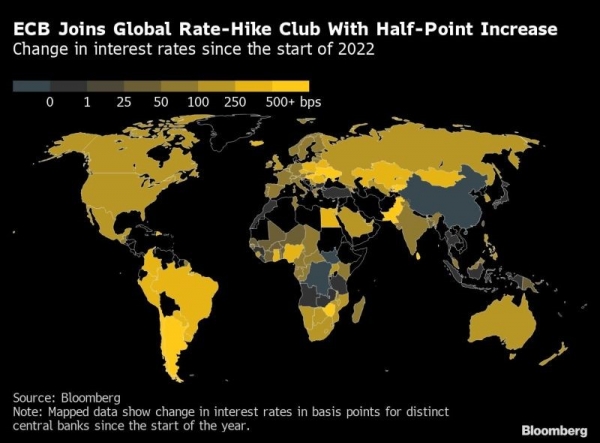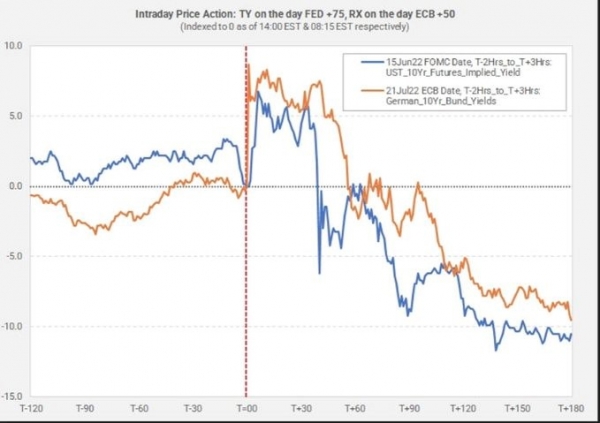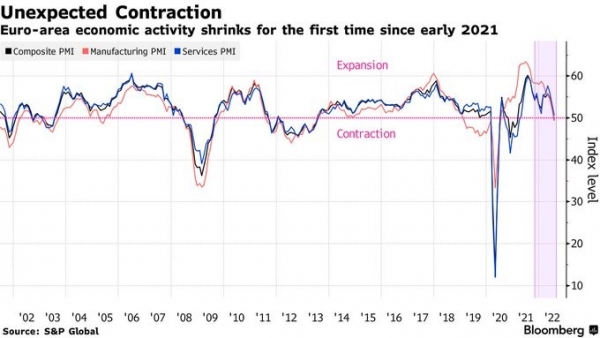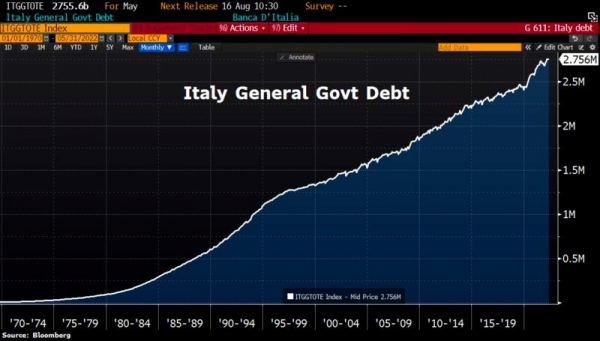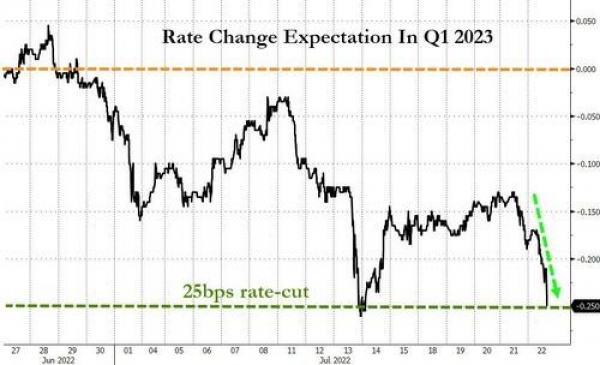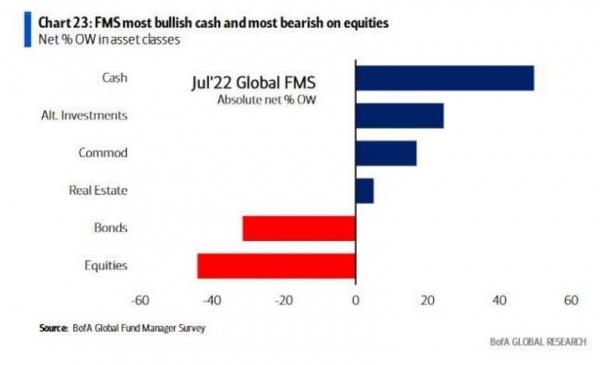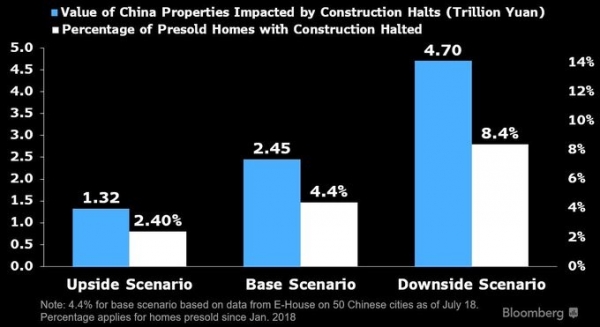With its first rate hike since 2011, the ECB finally joined the club of central banks raising rates. The ECB is raising its main refinancing rate by 50 basis points to 0.50% and the deposit rate from -0.5% to zero (more than it had previously announced). The ECB also unveiled a new crisis tool called "Transmission Protection Instrument" (TPI), before limiting the yield spread between peripheral and core debt.

Chart #1 - ECB joins Global rate-hike club
Chart #2 - Bond markets have made up their minds
Both the Fed and the ECB have surprised the market with the size of their rate hikes over the last two months. In both cases, the reaction of the bond market has been similar. German Bunds and US Treasury yields have experienced the same price movement: a timid rise in bond yields, followed by a relatively sharp fall. The message from the bond market seems relatively clear: more rate hikes this year should have a more severe impact on growth and thus lead to lower interest rates thereafter.
Chart #3 - Very clear signals of economic slowdown
After a brief rebound, US macroeconomic data disappointed again last week, with a deterioration of PMI indices, initial jobless claims, housing data (homebuilder sentiment collapsed as existing home sales fell while housing starts and building permits for single-family homes plunged), as well as Philly Fed figures and leading indicators. The situation is even more worrying on the European continent, as activity in the eurozone has suddenly contracted, pointing to a possible recession.
Chart #4 - Another political drama in Italy
Italian Prime Minister Mario Draghi has failed in his attempt to form a government and stay in power. When Mario Draghi announced that Italians had persuaded him not to resign, for much of Wednesday it looked as if his national unity government had a good chance of surviving. He then called for a new pact and a vote of confidence in the Senate. But hours later, three coalition parties said they would not take part in the vote. After a year and a half in power, his government, which includes the right and the left, is collapsing.
Perhaps at the worst possible time, since the economic fundamentals are not good. Indeed, Italy's trade surplus has collapsed despite the weakness of the euro. It has fallen from 70 billion euros (for the last 12 months) to 10 billion euros. Since December 2021, monthly imports have exceeded exports, partly due to rising energy prices and a lack of willingness to become more energy independent through solar and wind power. The political crisis and widening deficits come at a time when debt is at an all-time high. Italy's public debt stood at €2.8 trillion in May, a debt-to-GDP ratio of over 150%. Italy is home to almost a quarter of the eurozone's debt and faces the risk of a sovereign debt crisis. Hence the importance of the TPI for investors.
Chart #5 - The US yield curve now expects rates to fall by 25 basis points as of Q1 2023.
After last week's poor US macroeconomic figures, the market is now giving a 100% probability of a 25bp rate cut by the Fed in Q1 2023. The prospect of future rate cuts and rather reassuring earnings releases allowed the equity markets to record gains last week.
Chart #6 - Have investors capitulated?
According to a Bank of America survey of fund managers, the vast majority of them are underweight equities and bonds and overweight cash and alternative investments. Sentiment is therefore rather pessimistic, even close to capitulation. From a contrarian point of view, this is rather good news.
Chart Chart #7 - Construction halts in China could impact $700 billion worth of real estate
The property crisis in China is gathering speed. A growing number of buyers have defaulted on their mortgages, adding to the woes of China's already struggling property sector.
Property sales plunged for the tenth consecutive month in June, underlining the extent to which government relief efforts are failing to mitigate the crisis.
It is in fact a major shock to cash-strapped property developers who have long relied on pre-sales of flats to finance themselves.
The halt in construction in China could affect $700 billion worth of homes, says Kristy Hung, an analyst at Bloomberg Intelligence, in a research note. The percentage of pre-sold homes that have been stalled could rise to 8 percent from the current 4 percent, according to Hung's bearish scenario analysis.
Disclaimer
Il presente documento di marketing è stato redatto dal Gruppo Syz (di seguito denominato «Syz»). Esso non è destinato alla distribuzione o all’utilizzo da parte di persone fisiche o giuridiche cittadini o residenti in uno Stato, un Paese o una giurisdizione le cui leggi applicabili ne vietino la distribuzione, la pubblicazione, l’emissione o l’utilizzo. Spetta unicamente agli utenti verificare che siano legalmente autorizzati a consultare le informazioni nel presente. Il presente materiale ha esclusivamente finalità informative e non deve essere interpretato come un’offerta o un invito per l’acquisto o la vendita di uno strumento finanziario, o come un documento contrattuale. Le informazioni fornite nel presente non sono intese costituire una consulenza legale, fiscale o contabile e potrebbero non essere adeguate per tutti gli investitori. Le valutazioni di mercato, le durate e i calcoli contenuti nel presente rappresentano unicamente stime e sono soggetti a variazione senza preavviso. Si ritiene che le informazioni fornite siano attendibili; tuttavia, il Gruppo Syz non ne garantisce la completezza o l’esattezza. I rendimenti passati non sono indicativi di risultati futuri.
